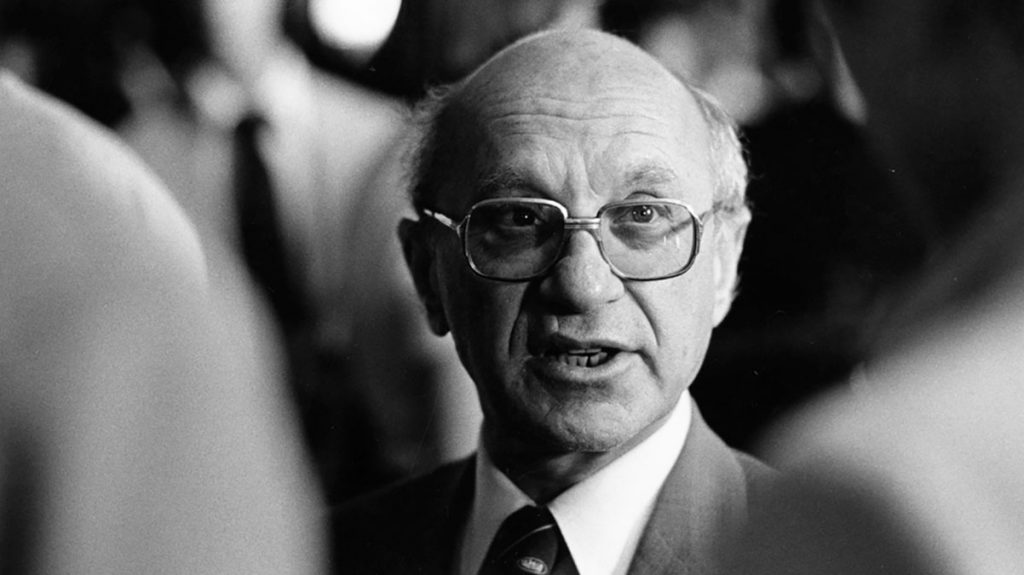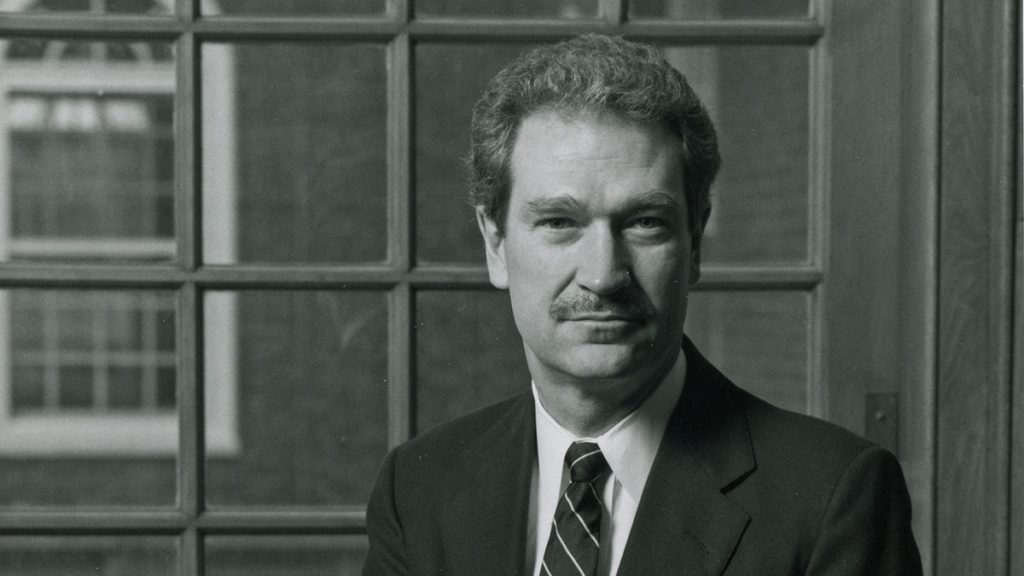Jensen and Meckling’s 1976 article is an academic classic, but heavily criticized by stakeholder capitalists for arguing that corporate structures should be designed to maximize short-term profit. In fact, a careful reading of their article uncovers a quite different conclusion.
Editor’s note: The current debate in economics seems to lack a historical perspective. To try to address this deficiency, we decided to launch a Sunday column on ProMarket focusing on the historical dimension of economic ideas. You can read all of the pieces in the series here.
In 1976, economists Michael Jensen and William Meckling published what turned out to be the most cited academic business article of all time. Their paper, titled “Theory of the Firm: Managerial Behavior, Agency Costs and Ownership Structure,” highlighted the agency costs—losses to welfare—that arise when managers don’t act in shareholders’ interests. It’s been cited nearly 100,000 times and inspired entire streams of research.
Yet despite their article being an academic classic, Jensen and Meckling (“JM”) is the object of scorn and ridicule by many practitioners today, especially advocates of stakeholder capitalism. Their primary target is Milton Friedman’s op-ed “The Social Responsibility of Business is to Increase Its Profits,” which allegedly argues that the goal of companies should be to the exclusive maximization of short-term earnings. But JM takes second place for apparently claiming that the structure of companies should ensure that managers indeed pursue this goal. It’s been blamed for:
• Short-term executive pay. The Economist argues that JM advocate “tying their [CEOs’] incomes to profits.”
• Excessive leverage. The same article claims that firms should “use large debts (especially through LBOs) as a further external discipline.”
• The short-termism of capital markets. Former advertising executive Simon Sinek alleges that “William Meckling, of the University of Rochester, and Michael Jensen, of the Harvard Business School” came up with the “answer everyone was looking for,” “a simple metric for measuring corporate performance”—the short-term stock price.
• The immorality of capitalism. A Forbes article argues that “Meckling and Jensen thus took the Adam Smith’s metaphor [sic] of an ‘invisible hand’ and proposed a license for enterprises to pursue unbridled self-interest across an entire society.”
According to these critics, the solution is to renounce JM and radically reform capitalism so that companies are insulated from shareholder interests. This might involve rewriting the law to change directors’ fiduciary duties away from shareholders, dual-class share structures that restrict the voting rights of outside investors, or stakeholder representatives (such as employees) on the board.
“There’s a strong incentive to caricature Friedman and Jensen and Meckling, as it’s easy to push your view of how capitalism should be run if the status quo appears stuck in the dark ages.”
In an earlier ProMarket article, I explained that many criticisms of Friedman are based on serious misunderstandings about what he actually wrote, casting doubt on whether their authors actually read beyond the title. And the same is true for JM—some critiques refer to “Meckling and Jensen” when the start of the article clearly states that it is by “Jensen and Meckling,” both of Rochester. Interestingly, Wikipedia attributes the paper to “Meckling and Jensen,” raising the possibility that the commentaries are based on reading a Wikipedia entry, rather than the article itself. There’s a strong incentive to caricature Friedman and JM, as it’s easy to push your view of how capitalism should be run if the status quo appears stuck in the dark ages. But the JM article is far more nuanced than commonly portrayed. Advocates of stakeholder capitalism, such as me, should use it to guide us rather than ridiculing it.
What Did Jensen And Meckling Actually Say?
While their focus was on ownership structure, a key starting point was what they viewed as the goal of the firm. It is to maximize shareholder “welfare” (which they sometimes refer to as “utility”), not short-term profits. In my article on Friedman, I highlighted how his advocated goal of shareholder value is critically different from short-term profits— shareholder value is the present value of all future cash flows, including those in the very long term. But JM go beyond Friedman by making a critical distinction between shareholder welfare and shareholder value. They start with a manager who owns “his” (assumed male by JM) entire firm, and so there are no agency costs. They argue that the owner’s welfare contains “not only the benefits he derives from pecuniary returns but also the utility generated by various aspects of his entrepreneurial activities such as … the kind and amount of charitable contributions, personal relations (‘love,’ ‘respect,’ etc.) with employees.”
Friedman, too, recognized that shareholders may have non-financial goals. But, critically, he assumed that companies have no comparative advantage in achieving these social goals. The only socially responsible action that Friedman considers is charitable donations. If a company donates $1 to charity, that’s no more effective than if it paid out that $1 as a dividend to shareholders and they gave it to charity. So, according to Friedman, maximizing shareholder value is the same as maximizing shareholder welfare and there’s no reason to deviate from (long-term) shareholder value.

JM stressed that this assumption is wrong. Companies have a comparative advantage in pursuing many social goals. It’s far more efficient for them to invest in employee well-being rather than to work employees to the bone and then to donate part of their profits to a trade union. Indeed, they stressed that “there are not perfect substitutes for these [non-pecuniary benefits] available on the outside, i.e., to some extent they are job specific.” Their Figure 1 is a graph with “non-pecuniary benefits” and “firm value and wealth” as the axes, and shows that the owner-manager will choose something in between.” He will not maximize shareholder value but sacrifice shareholder value for non-financial benefits.
So what, then, are agency costs? They arise when the firm is run by a manager who owns less than 100 percent of the company—so there’s a separation between shareholders (the “principal”) and the manager (“agent”) who acts on their behalf. Agency costs arise when there is “divergence between the agent’s decisions and those decisions that would maximize the welfare of the principal”. The critical word is “welfare”—not short-term profits, not the “stock price” or “share price” (neither term is mentioned even once in JM), and not even long-term shareholder value. It includes all of the non-pecuniary benefits that shareholders are concerned about. For example, pension funds, who are concerned not with their beneficiaries’ incomes in retirement but their quality of life—which is affected by the temperature of the planet, social justice, and biodiversity.
Why might such agency costs arise?
• Some CEOs may erode shareholder value through pursuing the “quiet life” —coasting rather than exerting the effort needed to transform a company or taking the risks required for innovation. In contrast to the “fixed pie” mentality which assumes that sacrificing shareholder value gives more of the pie to stakeholders, such sloth shrinks the pie for both—the failure of Kodak being a prime example.
• Other CEOs may pursue social objectives—but different ones from what shareholders want. Research shows that some CEOs donate to charities—but those affiliated with the directors who sit on the CEO’s own board. They get a quid pro quo for doing so: they enjoy higher pay and are less likely to be fired for poor performance.
• Other CEOs still may pursue the short-term stock price rather than shareholder value, or focus entirely on long-term shareholder value and ignore shareholders’ social objectives. This might be because their reputation and likelihood of being poached by a bigger company are based on the stock price.
In medicine, diagnosis precedes treatment. The same is true for policy: diagnosing what agency problems actually are is critical to coming up with effective solutions. Incorrect claims that agency costs arise when CEOs don’t maximize the short-term stock price, and that the current model of capitalism is set up to ensure such maximization, lead to calls to radically overhaul it. But recognizing that agency costs instead stem from the CEO failing to pursue shareholder welfare means that the solution is actually more shareholder oversight, rather than less.
Indeed, a sizable chunk of JM is devoted to the benefits of monitoring, which restrict the CEO from pursuing his own objectives—such as a quiet life or his own pet social causes. They show that lower monitoring costs increase shareholder welfare, and so policies should focus on reducing these monitoring costs. While such remedies aren’t the focus of their article, JM’s framework can be applied to solutions proposed today:
• Shareholder votes. One solution is a mechanism to allow shareholders to communicate their non-pecuniary preferences beyond shareholder value. Tom Gosling and I advocate a “say-on-purpose,” an annual vote on the company’s non-financial objectives and their success in achieving them. Oliver Hart and Luigi Zingales recommend putting major corporate decisions to a shareholder vote so that they can express their views on the non-financial consequences.
• Proxy access. Another solution is to allow shareholders to include their own proposals on the corporate proxy (voting form). However, a recent SEC ruling has reduced this ability. It also hinders the resubmission of previously-proposed shareholder resolutions. Such a ruling increases monitoring costs, and was strongly criticized by former SEC Commissioner Robert Jackson.
• Proxy advisors. Another recent SEC proposal was to require a proxy advisor that intends to recommend voting against management to first present their analysis to management and include their objections in its final report. Professor Jackson raised concerns about this proposal also, since unbiased information is crucial for monitoring. This proposal was eventually dropped.
• Reporting. Continuing with the importance of information, JM highlight the role of “auditing”—but nothing in their paper stresses that these audits should be restricted to financial numbers. Calls for companies to report on their non-financial performance, both in quantitative and narrative forms, are fully in line with the maximization of shareholder welfare.
What about executives’ pay packages? Did JM indeed advocate “tying their incomes to profits”? In fact, their paper doesn’t analyze executive pay at all—as suggested by the title, it focuses on “ownership structure,” not compensation structure. They do note that the more the owner-manager sells of his firm to outside shareholders, the less of an owner he becomes—agency costs rise because he has less skin-in-the-game. The solution is thus to ensure that the CEO remains an owner, holding long-term equity, rather than being a salaried employee paid with a bonus based on short-term profit. Indeed, research shows that CEOs who own a substantial chunk of their firm outperform those who own little by 4-10 percent per year in long-term shareholder returns.
And what about JM’s apparent recommendation that companies “use large debts (especially through LBOs) as further external discipline”? In fact, the entire Section 4 of their paper warns that against doing so as it will lead to excessive risk-taking. This is because, if the risk pays off, shareholders (including the CEO) benefit but debtholders don’t because their upside is capped. But if the risk backfires, debtholders bear most of the downside because shareholders’ losses are capped due to limited liability.

The critical insight of JM is that, even though shareholders benefit ex post from managers exploiting debtholders, they wish to ensure ex ante that this doesn’t happen. A creditor that anticipates excessive risk-taking will demand a substantial interest rate as compensation or not lend at all—ultimately hurting shareholders. So, it’s in shareholders’ own interest to ensure that the CEO doesn’t focus excessively on shareholder value. One solution that JM propose is for shareholders to voluntarily place “constraints on management’s decisions regarding such things as dividends, future debt issues, and maintenance of working capital”—the opposite of the excessive leverage and shareholder payouts that JM’s critics claim they advocate. Another that they conjecture, but “have as yet been unable to incorporate this dimension formally into our analysis in a satisfactory way” (recall their paper was not about executive pay) is to pay the CEO with debt rather than just equity. Qi Liu and I formally analyzed this in subsequent research and showed that it’s in shareholders’ own interest to pay the CEO based on debtholder value, not just shareholder value.
Crucially, this insight applies beyond just debtholders to other stakeholders. Agency costs don’t just arise when the CEO ignores shareholder value directly, but also material stakeholder issues that ultimately affect shareholder value. A company with a reputation for mistreating its employees or customers will fail to attract or retain them. A new enterprise with no reputation will have incentives to provide warranties to customers or long-term contracts to key employees, similar to the promises contained in a debt covenant. It’s not at all in shareholders’ interest for companies “to pursue unbridled self-interest across an entire society,” no matter how eye-catching this claim is. Even if some shareholders, unlike pension funds, are exclusively concerned with shareholder value, they’ll still care about stakeholder welfare.
“The critical insight of Jensen and Meckling is that, even though shareholders benefit ex post from managers exploiting debtholders, they wish to ensure ex ante that this doesn’t happen.”
Now, it’s certainly not the case that all companies take stakeholder issues seriously at present. One reason is that some shareholders have too little skin-in-the-game for it to be worth the effort to monitor (long-term) shareholder value—instead, they focus on short-term profits as they’re freely observable. The remedy, then, is more concentrated shareholder ownership, not less. A second reason is that the stock price is myopic and deviates from long-term shareholder value. There is actually far less evidence of systematic short-termism than currently alleged: many of the most valuable companies today, such as Tesla, are valued at much more than their short-term earnings. But, it certainly may happen in some cases. The solution is for companies to report on their stakeholder performance, and for regulators to tax negative externalities so that companies more rapidly internalize their impact on stakeholders. But these solutions aim to ensure that CEOs are more accountable, not less.
Summing Up
Commentators are correct that Jensen and Meckling are concerned with the agency costs that occur when managers underweight shareholders’ interests. But underweighting shareholders’ interests does not mean overweighting stakeholders’ interests. Moving away from “shareholder capitalism” need not lead to “stakeholder capitalism,” but “managerial capitalism” where the CEO pursues his own interest at the expense of both shareholders and stakeholders. Nor are shareholders exclusively concerned with short-term profits, the short-term stock price, or even long-term shareholder value. The solution to many problems with capitalism is more shareholder oversight and more managerial accountability, not less.






